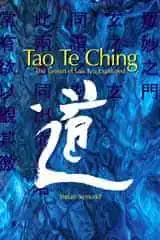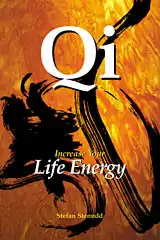Life Energy Beliefs
Q
Life Force Ideas Around the World
Here are the Q entries of life energy beliefs around the world and from antiquity to the present. An edited and expanded version of this Life Energy A to Z is published in my book
Life Energy Encyclopedia.
Q

Qi/chi/ch'i is the Chinese concept of life force. The word originally means
steam, but has also for a very long time been used for breath. The
pictogram consists of two parts, whereof one stands for steam, wind, air,
and the like, and the other part is rice, the dominating food for traditional
China. Of course, the steaming rice is the one that is cooked, and thereby
has become edible. Thereby the sign shows nourishment, an energy crucial
to life, which in its form is similar to steam and wind, and in its nature is
related to breathing. The word also has many other meanings, connected
to life spirit in Chinese and Japanese tradition, such as: mood, soul,
intention, interest, attention, temper, wrath, essence, sense, spark. Qi
permeates everything alive, but also more or less everything else in
nature. It can have different qualities, and vary in power from person to
person as well as from one moment to another. Inside humans, it is said to
flow in certain courses, meridians, and where this flow is halted or
hindered it can be stimulated by different types of techniques, for example
acupuncture, qigong, dao-in and taiji (see these words). In the Eastern
martial arts, qi is exercised as a way to mobilize one's own power and
defeat the opponent. When transcribed from Japanese, the word is usually
spelled ki.

Acupuncture doll.

Qigong (also spelled chi kung) is a Chinese method for training the life
energy qi (see this word) on one's own, with a number of ritualized body
movements and breathing techniques, where posture is of particular
importance. Gong means approximately 'skill achieved through practice'.
The method may have its origin in China as early as the 17th century BC,
but the oldest known text on it is from the Han dynasty (206 BC — 220 CE),
during which the method was called dao-in (from Japanese transcribed do-in, see this word).
Quasi-electrostatic field is an expression from 1959 by the American
physicist Henry Margenau (1901-1997), intended to explain
parapsychological phenomena, especially ESP (extra-sensory perception).
Margenau claimed the necessity of backward-moving time to explain such
things. H. A. C. Dobbs presented a quasi-field theory in 1965, where there
were psi-trones, linked to two-dimensional time.
Quinta essentia see quintessence.

Quintessence (Greek pempte ousia, 'fifth element', Latin quinta essentia) is
according to Aristotle (384-322 BC) the substance that the celestial bodies
consist of, contrary to the four elements on Earth: earth, water, fire, and
air, established by Empedocles (c.490-430 BC). The fifth element is
according to Aristotle perfect and transparent, with an even circular
movement. It keeps the other four elements intact. He also called it aither,
eter. In Greek mythology, Aither was the light air high up in heaven,
contrary to Aer, which was darker air closer to Earth. Medieval alchemists
tried to extract quintessence. It has certain similarities to life energy such as qi, but not as
many as the Greek concept pneuma (see this word). See also prime mover.
Life Energy Beliefs from A to Z
|
My Life Energy Books
Qi, prana, spirit, ruach, pneuma, and many other life forces around the world explained and compared. Click the image to see the book at Amazon (paid link).
The life energy qi (also chi or ki) explained, with several very easy exercises to awaken, increase, and use it. Click the image to see the book at Amazon (paid link).
|
My Other Websites
The ancient Chinese life energy
qi (
chi) explained and how to exercise it.
Creation stories from around the world, and the ancient cosmology they reveal.
What the Greek philosophers believed about the cosmos, their religion and their gods.
Taoism, the ancient Chinese philosophy of life explained. Also, the complete Tao Te Ching online.
Other Books of Mine
The Greek philosophers and what they thought about cosmology, myth, and the gods.
Click the image to see the book at Amazon (paid link).
This book examines Jungian theories on myth and religion, from Carl G. Jung to Jordan B. Peterson.
Click the image to see the book at Amazon (paid link).
The Taoism of Lao Tzu Explained. The great Taoist classic, translated and extensively commented chapter by chapter.
Click the image to see the book at Amazon (paid link).
Erroneous Tao Te Ching Citations Examined. 90 of the most spread false Lao Tzu quotes, why they are false and where they are really from.
Click the image to see the book at Amazon (paid link).
About me
I'm a Swedish author and historian of ideas, researching the thought patterns in creation myths. I've also written books about Taoism, the Tarot, and life force concepts around the world.
Click the image to get to my personal website.
 Cosmos of the Ancients
Cosmos of the Ancients Archetypes of Mythology
Archetypes of Mythology Tao Te Ching
Tao Te Ching Fake Lao Tzu Quotes
Fake Lao Tzu Quotes Stefan Stenudd
Stefan Stenudd



 Life Energy Encyclopedia
Life Energy Encyclopedia Qi — Increase your life energy
Qi — Increase your life energy